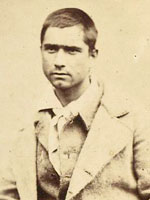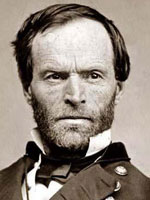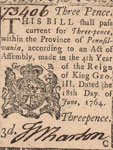What Happened to the Fenians After 1866?

What happened to the Fenians after 1866?
The Irish Republican Brotherhood (IRB) was established in 1858 in Ireland and the United States as a secular, revolutionary movement committed to armed struggle against Great Britain in order "to make Ireland an independent democratic republic" as members pledged when taking the society's oath. In 1859, the American wing—"equal, if not senior, partners in the trans-Atlantic organization," according to historian Hereward Senior—became known as the Fenian Brotherhood, a name derived from the Fianna, the militia of the warrior Fionn MacCumhail of Gaelic legend.
Modeled on earlier Irish revolutionary organizations by revolutionaries who had fled Ireland following the failed rising of 1848, the Fenian Brotherhood and the IRB emerged following a decade during which the population in Ireland had declined from 8.5 million to six million due to famine, disease, and mass migration, especially to the U.S. In a resolution agreed upon at the first Fenian Congress in the U.S., held in Chicago in November 1863, Fenians expressed "intense and undying hatred towards the monarchy and oligarchy of Great Britain" that, they charged, had "ground their country to the dust, hanging her patriots, starving out her people, and sweeping myriads of Irishmen, women, and children off their paternal fields, to find refuge in foreign lands."
Although the Fenian Brotherhood remained in existence until 1886, its most notable North American exploits, a series of failed military raids into Canada, occurred in 1866. After 1866, the IRB center of gravity moved to Ireland, although in 1870 Fenians undertook another series of raids into Canada. Following 1870, as the Fenian Brotherhood declined in importance, the group Clan na Gael developed into the most prominent Irish-American revolutionary organization, and during the second half of the 1870s, the latter group became allied with the IRB. Throughout this period, the words "Fenian" and "Fenianism" were applied to the IRB as a whole and to revolutionaries not connected with the original Fenian Brotherhood. Historians have noted significant unintended consequences in Canada of the Fenian raids and have contended that Fenianism influenced later Irish nationalist movements of the early 20th century.
In 1866, the Fenian Brotherhood conducted three military incursions into Canada after plans for an insurrection in Ireland had fallen apart due to British raids against the IRB in Dublin in September 1865 that had resulted in arrests and dispersal of the leadership. With many Irish-American veterans of the American Civil War in their ranks, the Fenians decided to seize territory in British North America and proclaim an Irish Republic. They hoped their raids would encourage the United States to follow with troops in order to establish the St. Lawrence River as its northern border or even to annex the whole of Canada.
During the Civil War, tensions had heightened between the U.S. and Great Britain when the latter, after declaring its neutrality in the conflict, allowed Confederate diplomats passage on British ships and sanctioned the building in England of Confederate cruisers that later destroyed Union merchant ships. American hostility to Great Britain increased in October 1864 when a Confederate band, after crossing the Canadian border, robbed banks in St. Albans, Vermont, stole horses, set fire to houses, and shot a citizen before returning to Canada. After a local Canadian court released the raiders on a technicality, voices in the American press called for an invasion.
The movement in 1865 in the U.S. for the annexation of Canada, characterized as ephemeral by historian Donald F. Warner, included calls in the press for Union and Confederate armies to unite to attack Canada and schemes of politicians to coerce annexation through economic pressure. Although expressions of U.S. interest in annexing Canada died down following the end of Civil War hostilities, the Fenians nevertheless hoped that their planned invasion would revive the annexation movement and draw British troops to North America leaving Ireland vulnerable.
The plan of attack, devised by the Fenian secretary of war who had been a U.S. Army major during the Civil War, called for multiple invasions: across the Vermont-Canadian border; from Malone and Potsdam in New York to the Canadian towns of Cornwall and Prescott, then north to Ottawa and Montreal; across Lake Michigan and Lake Huron to Stratford and London in order to gain control of an important railway terminal; and incursions to capture Toronto and major waterway and railway centers. The Fenians had some reason to believe that the U.S. government would recognize an Irish republic on captured British soil, as President Andrew Johnson and his Secretary of State, William Seward, anxious not to antagonize Irish-American voters, reportedly stated that the U.S. would "acknowledge accomplished facts," in the words of historian William D'Arcy, when they were informed by a Fenian delegation about the group's vague intentions to seize territory in Canada. No official U.S. commitment, however, ever was committed to writing.
Canadian historians have concluded that in addition to misreading the response of U.S. politicians, the Fenians also misjudged the Canadians. Their invasion plan was formulated, Hereward Senior has written, "without much regard for Canadian history or the contemporary political scene." W. S. Neidhardt has pointed out that Fenian plans to win over key elements of the Canadian populace "were based on completely false assumptions." Contrary to their beliefs, most Canadians of Irish descent were Protestants from Northern Ireland, not Catholics like the Fenians. Furthermore, for many Irish Catholics, "Canada offered a reasonably good government, a fair legal and adequate educational system, and an opportunity to maintain a decent standard of living." Most Canadians who had experienced the Famine in Ireland during the 1840s were unlikely to risk their present situation to support the Fenians' scheme.
The first Fenian operation of 1866 occurred in April when a small force raided Indian Island in New Brunswick as part of a plan to invade the nearby island of Campobello in order to establish a base for a later landing in Ireland, for launching cruisers to attack British commercial vessels, and as a diversionary tactic designed to keep British troops in North America preoccupied while revolutionaries in Ireland attempted a rising. By declaring themselves a republic at war with Great Britain, the Fenians hoped to attain the status of belligerents, rather than pirates, and thus not risk violating U.S. neutrality laws. A concerted effort by Canadian militias, well-armed British naval vessels, and the American military, however, confounded Fenian plans with only a few shots fired during confrontations and no reported casualties.
Some nine combatants from each side were killed in battle, however, during the second Fenian invasion of 1866, which began in the early morning of June 1 as a Fenian force of nearly 1,000 men traveling on canal boats that were towed by tugs crossed the Niagara River near Buffalo and landed at a dock just north of the Canadian village of Fort Erie, which they proceeded to occupy. Two days later, following a victory at Ridgeway over ill-prepared Canadian volunteer forces—the ease of disrupting the Campobello plot apparently had led to complacency among Canadian troops—the Fenians, aware that a large Canadian force was approaching, retreated back across the Niagara River, where U.S. naval forces belatedly called into action arrested them. Three days later, President Johnson issued a proclamation characterizing the Fenians as "evil-disposed persons" and their actions as "proceedings which constitute a high misdemeanor, forbidden by the laws of the United States as well as by the law of nations."
The final Fenian raid in 1866 took place one day after Johnson's proclamation, on June 7, when a band of less than 1,000 raiders starting out from St. Albans crossed the Vermont border and planted an Irish flag near the Canadian village of Pigeon Hill. Fenians subsequently occupied Pigeon Hill and three additional Canadian villages before fleeing from a Canadian cavalry corps that chased them back to the border. Under political pressure during a congressional election year, Johnson issued executive orders to release Fenians arrested in the raids and return arms that were seized, and intervened with British authorities to try to get Fenian prisoners in Canada and Ireland released. Although 25 of the invaders were tried and convicted, all but one—a man who died in prison—were pardoned by 1872.
After the congressional elections of 1866, the Fenians no longer were able to exert a significant influence over American politicians. Plagued by factional fighting, financial troubles, police informers, and opposition from the Catholic Church, they did not attempt another Canadian raid until May 24, 1870, a date chosen to coincide with Queen Victoria's birthday. On that day, President Ulysses S. Grant issued a proclamation warning U.S. citizens "against aiding, countenancing, abetting, or taking part" in reported "sundry illegal military enterprises and expeditions" aimed "against the people and district of the Dominion of Canada."
A Fenian force of less than 200 men crossed the border the next day despite warnings from a U.S. marshal that Canadian riflemen in well-chosen positions on an overlooking hill awaited their arrival. Although four or five Fenians died in the subsequent battle, as the Fenians fled, their commander, John O'Neill, berated them for cowardice. O'Neill himself then was arrested by the marshal. On the following day, a group of more than 450 Fenians gathered in Malone, New York and advanced over the border. In a skirmish with Canadian forces the next day, one Fenian was killed before most retreated to Malone. Despite entreaties by their general for further action, most of the Fenians remained convinced that they had no chance to win and the general was arrested. The Canadians suffered no serious casualties during the 1870 raids. In October 1871, O'Neill, having resigned from the Fenian Council, led a group of three dozen men across the Canadian border into Manitoba in an unsuccessful raid that an advocate for the independence of the Red River Colony had proposed, but which the Fenian Council had rejected. Historians have credited the Fenian raids with encouraging a nationalistic spirit in Canada and spurring the movement to confederacy.
Despite failure in North America, the Fenians, after shifting their focus of attention to Great Britain at the end of 1866, "helped to work a change in the traditional English attitude toward Ireland," according to historian Brian Jenkins. Locating themselves in London, Fenian leaders, supported financially by Irish-American contributions, adopted a strategy of guerrilla warfare. In a proclamation published in the Times of London in March 1867, they announced the formation of an Irish Republic and Provisional Government. During that month, Fenians fought police and soldiers in clashes throughout Ireland in an attempted rising. In November, three Fenians, executed on the basis of doubtful evidence for the murder of a police officer who had been escorting captured Fenian leaders to prison, were heralded in the press as the "Manchester Martyrs." In December, 12 Londoners were killed in an explosion designed to facilitate the escape from prison of a Fenian armaments organizer.
In response to fears of the British populace stimulated by the return of Irish revolutionary activity, the new Liberal Party Prime Minister, William Ewart Gladstone, in 1869 and 1870, successfully enacted laws to disestablish the Church of Ireland and address longstanding Irish land tenure issues. Gladstone acknowledged that Fenianism had "produced that attitude of attention and preparedness on the whole population of this country which qualified them to embrace, in a manner foreign to their habits in other times, the vast importance of the Irish controversy." Gladstone's actions, historian Oliver P. Rafferty has written, were intended "to alienate Fenian opinion, and enable the mass of the Irish people to differentiate their aspirations from those of the revolutionaries." Subsequently, the Irish Protestant barrister Isaac Butt advocated home rule for Ireland as an alternative to an Irish republic, stating that Fenianism "taught me the depth, the breadth, the sincerity of that love of fatherland that misgovernment had tortured into disaffection and . . . exaggerated into revolt." While a number of leading Fenians supported the home rule movement and entered into mainstream politics, under an agreement characterized as the "New Departure," Fenians also maintained their revolutionary commitment to create through insurrection an independent Irish republic.
Rafferty has contended that "the Fenian idea of the necessity, or inevitability, of armed insurrection passed into Irish historical lore and conditioned the thinking of, perhaps, the majority of those who staged the 1916 insurrection." In a recently published history of the rise of Irish nationalism during the period between the 1880s and the Easter rising of 1916, M. J. Kelly has asserted, "Historians have largely neglected the activities of the Irish Republican Brotherhood in the 1880s, tending to focus on the two great flash-points of 1867 and 1916." In his revisionist history, Kelly has looked anew at a "second generation of Fenians, qualitatively distinct from their fathers and uncles," who developed "a fresh separatist dynamic based on the nurture of a distinctly Irish culture" and significantly influenced subsequent Irish nationalist political activity and ideals.
W. S. Neidhardt, Fenianism in North America (University Park, Pa.: Pennsylvania State University Press, 1975), 4, 13, 4142.
Hereward Senior, The Fenians and Canada (Toronto: Macmillan of Canada, 1978), 24; Donald F. Warner, The Idea of Continental Union: Agitation for the Annexation of Canada to the United States, 18491893 (Lexington, Ky.: University of Kentucky Press, 1960), 48.
William D'Arcy, The Fenian Movement in the United States: 18581886 (Washington: Catholic University of America Press, 1947; reissue, New York: Russell & Russell, 1971), 84.
James D. Richardson, comp., A Compilation of the Messages and Papers of the Presidents, 1789-1897 (Washington, 1899), 6:433, 7:85.
Brian Jenkins, Fenians and Anglo-American Relations during Reconstruction (Ithaca: Cornell University Press, 1969), 216.
Oliver P. Rafferty, The Church, the State and the Fenian Threat, 186175 (New York: St. Martin's Press, 1999), 110, 154, 155, 158.
M. J. Kelly, The Fenian Ideal and Irish Nationalism, 188219 (Woodbridge, UK: Boydell Press, 2006), 15, 16.
Robert Kee, The Green Flag: The Turbulent History of the Irish National Movement (New York: Delacorte Press, 1972).
Hereward Senior,The Last Invasion of Canada: The Fenian Raids, 18661870 (Toronto: Dundurn Press, in collaboration with the Canadian War Museum and the Canadian Museum of Civilization, 1991).
American Catholic History Research Center and University Archives, "Fenian Brotherhood Collection," (accessed September 14, 2008).

